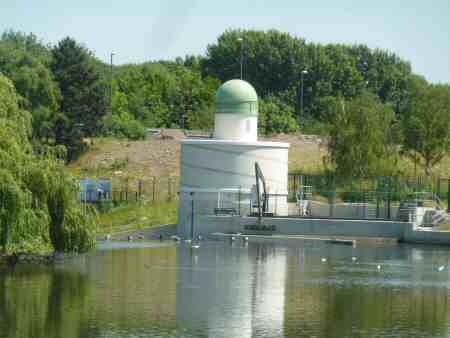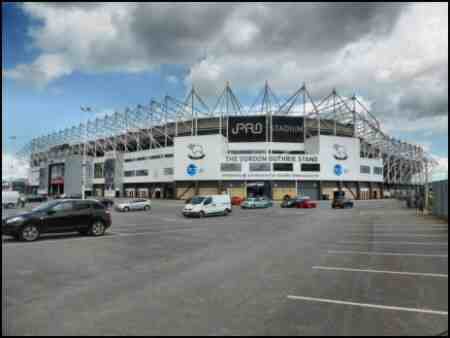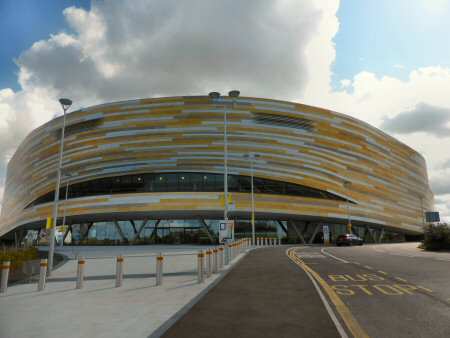ALVASTON SHORT WALK
ALVASTON WALK
Alvaston walk starts from Alvaston park and is very relaxing and enjoyable. Mainly following the River Derwent. Whether you take the option of walking along the riverside path from Alvaston Park to the city centre or the shorter alternative through Pride Park. For something different, you can walk to the top of the Derby Arena car park and do a bit of bird observation from several viewing points around the perimeter fence. You might also like to pop into the Arena Coffee Shop for some refreshments and with any luck watch cyclists speeding around the track.

LOOK OUT FOR ON ALVASTON WALK
Route Point 1 – Alvaston walk starts from Alvaston Park a picturesque, riverside park and open space, covering around 85 acres. It backs onto the River Derwent and offers a wealth of amenities. From a peaceful stroll around Alvaston Lake and a cup of tea and a bite to eat in the Waterside Café to an exhilarating ride on the BMX track. The park was opened to the public in 1913. Ten years later an attractive7.5 acres lake was added. It is a mixed fishery with specimen carp and tench. The park has been awarded the coveted Green Flag status and provides a wide range of amenities.
Point 2 –The River Derwent rises at Swains Greave between Bleaklow and Howden Moors in North Derbyshire. It flows south through the county for its entire journey before merging with the River Trent near Shardlow. More than any other river its waters have played a vital part in driving mill machinery, that placed Derbyshire at the forefront of the Industrial Revolution. In December 2001, the 15-mile stretch of the Derwent Valley from Matlock Bath to Derby was designated by UNESCO as a cultural World Heritage Site.


Point 4 – Michael Thomas Bass, MP for Derby from 1847 to 1883 was a generous local benefactor. He gave the land to the town in 1867, on which the Bass Recreation Ground now stands. Bass had purchased the three-acre site, bounded by the River Derwent and Morledge mill stream, in 1866, to form Derby’s second park. It was formerly known as ‘The Holmes’. The open-air swimming baths comprised two baths, which were 100ft x50ft and had a total of 129 dressing cubicles between them. Bass hired George Thompson as the architect for the complex, which eventually cost him £2,500, in addition to the £3,850 he paid for the recreation ground. They opened in 1873 but were destroyed after the Second World War.
Point 5 – Originally a long bridge by the weir in the River Gardens took the towpath of the Derby Canal across the River Derwent. This connected both arms of the canal on opposite sides of the river. However, having become unsafe it was removed. On 20 May 2013, Longbridge Weir Powerhouse was opened behind the River Lights complex. The powerhouse exists primarily to power Derby City Council House. This is achieved by water being passed through a turbine to produce electricity before being returned to the river. In electricity terms, it generates enough power to supply the needs of the Council Offices, with any surplus being sold to the National Grid.


Point 6 – Sir Francis Ley’s visits to America and his interest in the sport of baseball led to him founding a sports club and providing a ground for his workers. Here he encouraged them to play baseball. Eventually, the ground became the permanent home to Derby County Football Club from 1895 to 1997 and was named the Baseball Ground and the stand was named after Sir Francis. He spent £7,000 to increase the capacity of the stadium from 4,000 to 20,000. The club moved to their new stadium, Pride Park, in August 1997. Plans had been drawn up in 1993, for the club to move to Pride Park, but this was not a smooth transformation. As the club changed its mind and decided to remain, where it was and re-develop the Baseball Ground. However, in a dramatic move with work scheduled to start within a few days. The club had second thoughts and re-opened talks about moving to Pride Park. The impressive stadium aptly, named Pride Park, now forms the centrepiece of the development.
Point 7 – Derby Arena located at Pride Park is a multi-use arena and velodrome, suitable for sporting events as well as exhibitions, concerts, product launches and conferences. It can accommodate up to 5,000 people for special events, with some seated and others standing. The 250-meter indoor-cycle track is appropriate for individual, club, school, group and business track sessions, track leagues, and local, regional, national and international track events. Café ‘42’ is an excellent place to take refreshments and keep an eye on cyclists whizzing around the track.


ALVASTON WALK
THE ROUTE
- Follow Meadow Lane into Alvaston Park past the BMX track to the Waterside Café and car park. Continue along the path by Alvaston Lake at the end turn right to reach the River Derwent.
2. Turn left along the path by the River Derwent and pass under a road bridge. On your left is the Sanctuary a bird and wildlife reserve. All main features can be easily viewed from several points around the perimeter fencing, all accessible from the Derby Arena car park (passed later in the walk).
3. On reaching the second bridge over the River Derwent you have the option of continuing to walk alongside the river into Derby. Alternatively, to shorten the walk turn left towards Pride Park Football Stadium and follow the route from point number 7.
4. Follow the riverbank past various Pride Park businesses and Derby Railway Station. Shortly after going under a railway bridge take the path on your right into Bass Recreation Ground.
5. Where the path divides keep straight ahead close to the river. Follow the path as it curves around Bass Recreation Ground. Go under the road bridge into the River Gardens. By the weir is the Longbridge Weir Power House which exists primarily to supply electricity to Derby City Council House. Continue by the riverside to the Museum of Making before turning around and retracing your steps. You can either access Derby Bus Station and return to Alvaston Park by bus or retrace your steps to Route Point 3.
6. On reaching Route Point 3 walk past the Travelodge on your right towards the home of Derby County Football Club. The stadium was opened by HM the Queen, on 18 July 1997. Unfortunately, the first league match at the stadium, against Wimbledon FC, ended in embarrassment when the match had to be abandoned due to floodlight failure.
7. After passing in front of the football stadium, turn left and continue past Derby Arena. The Sanctuary mentioned at route point 2 is to the rear of the Arena car park.
8. From Derby Arena follow Royal Way to a roundabout and then follow the A6 straight ahead over a railway bridge with City Point on your left. On reaching Pacific Way angle to the left along a path across an open space. Follow the path with City Point houses on your left as it curves around to the left to meet an access road.
Turn left along the access road and follow it to the Waterside Café and Alvaston Lake. The car park where you started the walk is to the right.
REFRESHMENTS
Waterside Cafe is located in Alvaston Park. For more information visit: www.inderby.org.uk/parks/food-and-drink/.
Navigation Inn at 805 London Road, Alvaston is a few yards to the north of the Meadow Lane entrance to Alvaston Park. For more information telephone – 01332 605470.
